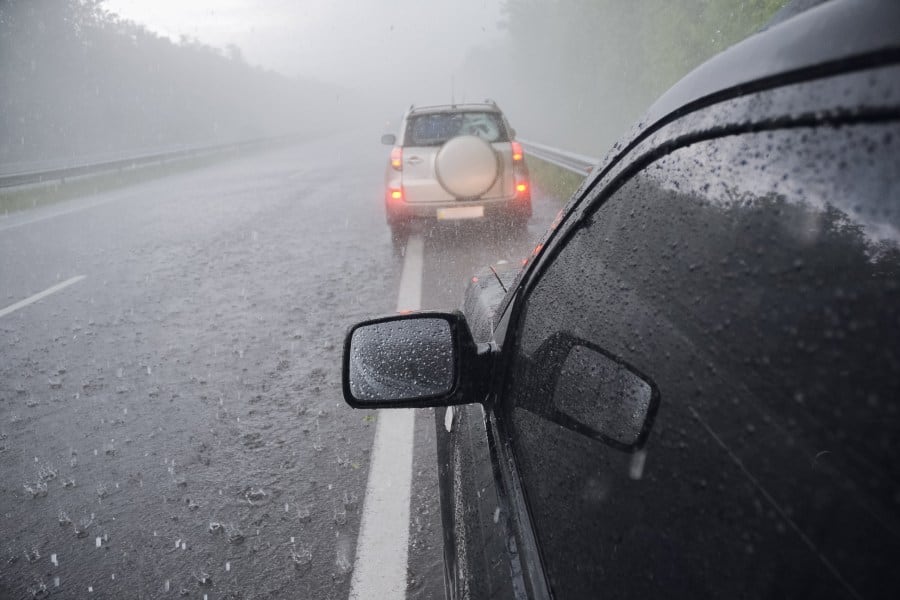
The Worst Hailstorms in History
Hail is a form of precipitation consisting of solid ice particles which look like balls or pellets called hailstones that form inside thunderstorm updrafts. Hailstone sizes range from marble size to that of a softball, depending on how the conditions prevailed. A hailstorm is a strong thunderstorm containing hailstones that fall viciously to the ground at speeds of up to 100mph, causing much damage.
How do hail/hailstorms form
This unusual phenomenon occurs when water vapor rises to a point where the temperatures are so low that it condenses to water droplets. Instead of these water droplets accumulating and falling like raindrops, they are further lifted upward by updrafts. In the atmosphere, the higher you rise, the cooler it becomes; thus, these droplets experience lower temperatures as they rise until they begin to freeze. During freezing, there is usually a balance of forces, updraft and gravity, causing the ice particles to remain suspended in the air. Depending on the strength of the updraft force holding them up, the ice particles (hailstones) grow in size by attracting additional moisture or combining with other hailstones. They grow to a point where the updraft cannot hold them and gravity overcomes it, falling them from the sky as hailstorms.
Conditions for hailstorms
- Strong upward winds (updrafts)
- Low atmospheric temperatures
Some of the Worst
This article is about all the worst hailstorms, including their size and when they occurred. As readers will learn, all hail is not created equal – some are long-lasting and devastating while others are just a nuisance. Discussing the worst Hailstorms in history can help the reader understand truly how damaging and impactful hail can be. Below is a list of some of the worst hailstorms in history.
1. The “Great” Storm of 1794 – France
The Great Storm of 1794 struck France, the Low Countries, and Germany on 26 July 1794. This storm was the one that inspired English writer Mary Shelley to write her popular novel Frankenstein: Or, The Modern Prometheus. It ranks as one of the worst hailstorms in history. Hailstones as large as 3 inches (7.6 centimeters) in diameter killed thousands of livestock and caused extensive damage to crops and forests. The storm also led to Europe’s summer drought that year.
2. The “Great” Hailstorm of 1812 – United States
The Great Hailstorm of 1812, also known as the “New Madrid Hailstorm,” was one of the most severe hailstorms in U.S. history. Hailstones as large as 8 inches (20 centimeters) in diameter fell from towering clouds on 14 March 1812. The storm damaged crops and buildings, killing thousands of livestock and people and causing heavy losses to the nation’s economy.
3. The Hailstorm of 1875 – Luxembourg (Germany)
The Hailstorm of 1875 struck on 1 July 1875 in Luxembourg, Germany, and France. This storm ranks as one of the worst hailstorms in history. Hailstones as large as 4.5 inches (11.4 centimeters) in diameter fell from tall clouds, severely damaging crops and buildings, killing thousands of livestock and people, and causing heavy losses to the nation’s economy.
4. The Hailstorm of 1884 – Canada
The Hailstorm of 1884 hit Canada near Winnipeg on 11 July 1884. This storm ranks as one of the worst hailstorms in history. Hailstones as large as 6 inches (15 centimeters) in diameter fell from tall clouds, damaging crops and buildings and killing thousands of livestock and people.
June 23, 1784: South Carolina
A hailstorm of ice balls with circumferences of up to 9 inches hit Wateree River, South Carolina, causing eight deaths. This was the highest death toll from a single hailstorm in the US.
June 3, 1959: Kansas
Eighteen inches of hailstones hit Selden, KS and covered an area of about 70 square miles causing unprecedented damage, especially to crops. It also lasted 85 minutes, making it the longest hailstorm recorded in US history.
September 3, 1970: Kansas
This was the largest hailstorm to hit the US when it hit Coffeyville, Kansas. The hailstones weighed around 1.6 pounds, and were approximately 5.7 inches in diameter, roughly the size of softballs.
July 30, 1979: Colorado
Fort Collins, Colorado, was hit with a 40-minute hailstorm of grape-sized hailstones that covered the area. It caused head injuries to 25 people and killed a 3-month-old baby. About 2,000 homes and 2,500 cars were severely damaged.
July 11, 1990: Colorado
This supercell storm has been considered the costliest hailstorm in US history for a while. This storm fed off the moist winds from the east and cooler air in the higher parts of the atmosphere to produce hailstones the size of golf balls to baseballs that ravaged an area of around 5 to 10 miles in width, causing unimaginable damage. The number of deaths is uncertain, but it caused damage worth about $600million at the time,89 or around $1.2 billion currently.
May 5, 1995: Texas
This softball-sized hailstorm caught around 10000 people at the Mayfest Festival at the bank of the Trinity River. The storm’s aftermath was over 400 injuries to people and 60 were in critical conditions needing to be hospitalized. The total damage is estimated to be worth around $2 billion.
July 23, 2010: South Dakota
A massive hailstone hit South Dakota and weighed 1.9375 pounds, had a record-breaking 8 inches in diameter and 18.625 inches in circumference. This is the largest hailstone recorded in the US.
The storms discussed above are the worst hailstorms in history, and they have affected many countries around the world. As people will learn from this article, there is a lot of serious circumstances that come as a result off hail and other weather events that have hit our planet. Many people have lost their lives to natural disasters such as flooding, hurricanes, and severe hailstorms.